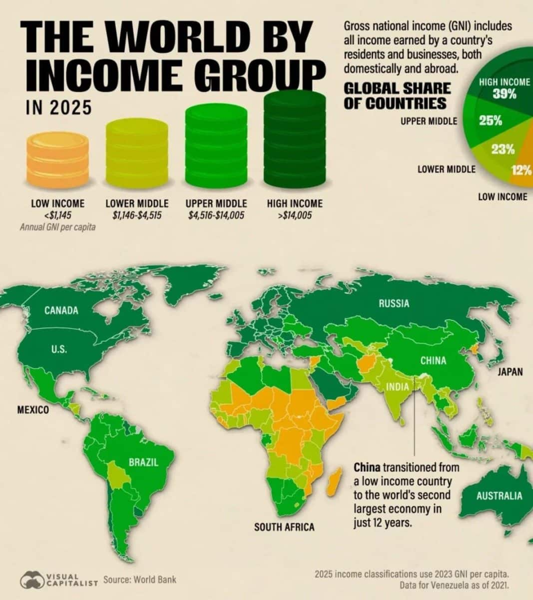Infographic: Countries categorized by income groups per capita.

China transitioned out of the low-income category in 1999 and achieved the status of an upper-middle-income country by 2010. It has maintained this position ever since.
Similarly, India, which was classified as a low-income country two decades ago, has evolved into a middle-income nation due to rapid economic growth.
The infographic presented above illustrates countries based on Gross National Income (GNI) per capita, utilizing data from the World Bank. Currently, 86 countries—39.4%—are classified as high-income nations.
Since 2000, this percentage has significantly increased from 25.4% of the global total. In Europe, former Eastern Bloc countries (Hungary, Poland, the Czech Republic, and Slovakia) have transitioned to high-income status, supported by market reforms and rising incomes.
The transition of Russia to the upper category from the group of upper-middle-income countries has been attributed by World Bank experts to increased defense spending, as well as a resurgence in trade, the financial sector, and the construction industry.
Meanwhile, Chile and Uruguay have achieved high-income status thanks to the commodity boom of the 2000s and the growth of GDP per capita. Chile is the largest producer of copper and the second-largest producer of lithium.